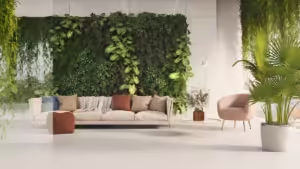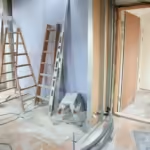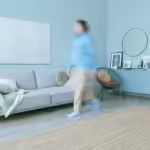“The greatest fine art of the future will be the making of a comfortable living from a small piece of land.” – Abraham Lincoln
In bustling cities where concrete jungles dominate and green spaces are scarce, the idea of growing your own food might seem like a distant dream. However, urban gardening is not only possible but also incredibly rewarding. This guide will show you how to transform your apartment, balcony, or rooftop into a thriving oasis of fresh produce and greenery.
Urban gardening isn’t just a trend; it’s a revolution in how we think about food, sustainability, and our connection to nature. Whether you’re a seasoned plant parent or a complete novice, this article will provide you with the knowledge and inspiration to start your own urban garden adventure.
Understanding the Basics of Urban Gardening
Before we dive into the nitty-gritty of creating your urban garden, it’s essential to understand the unique challenges and opportunities that city living presents for aspiring urban gardeners.
Climate Considerations: Urban environments often create microclimates that can be warmer than surrounding areas due to the heat island effect. This can extend growing seasons but also pose challenges in terms of heat stress on plants.
Space Limitations: Space is often at a premium in urban areas. But don’t let that discourage you! With creative thinking and smart planning, even the smallest balcony or window sill can become a productive garden.
Legal Considerations: Before you start transforming your balcony or rooftop, it’s crucial to check your lease agreement and building regulations. Some buildings have restrictions on balcony use or weight limits for rooftop gardens.
Choosing the Right Location for Your Urban Garden
The success of your urban garden starts with choosing the right location. Here are some factors to consider:
Sunlight: Most vegetables and herbs need at least 6 hours of direct sunlight daily. Observe your space throughout the day to determine which areas receive the most sunlight.
Wind Exposure: Urban areas can create wind tunnels between buildings. Choose a location that offers some protection from strong gusts, or consider installing windbreaks.
Accessibility: Your garden should be easily accessible for watering, maintenance, and harvesting. If you’re using a rooftop space, ensure you have a convenient water source nearby.
Essential Equipment for Your Urban Garden
Now that you’ve chosen your location, it’s time to gather the necessary equipment. Here’s what you’ll need:
Containers: In urban gardening, containers are your best friends. Choose pots, planters, or even repurposed items like wooden crates or plastic bottles. Ensure they have proper drainage holes.
Soil: Use a high-quality potting mix specifically designed for container gardening. Avoid using soil from the ground, as it can be too heavy and may contain pests or diseases.
Fertilizer: Organic fertilizers like compost or worm castings are ideal for urban gardens. They provide slow-release nutrients and improve soil structure.
Watering Equipment: Invest in a good watering can or a small irrigation system. For larger setups, consider installing a drip irrigation system to save time and water.
Tools: Basic gardening tools like a trowel, pruning shears, and gloves are essential for maintaining your urban garden.
Choosing the Right Plants for Your Urban Garden
The key to a successful urban garden is choosing plants that are well-suited to your space and climate. Here are some excellent options:
Herbs: Basil, mint, cilantro, and chives are easy to grow and perfect for small spaces. They also add fresh flavors to your cooking.
Leafy Greens: Lettuce, spinach, and kale are fast-growing and don’t require much space.
Tomatoes: Cherry tomatoes or determinate varieties are ideal for container gardening. They provide a bountiful harvest in a small space.
Peppers: Both sweet and hot peppers thrive in warm climates and are perfect for container growing.
Microgreens: These nutrient-packed seedlings are fast-growing and ideal for small spaces. Try growing sunflower, radish, or pea shoots.
Vertical Gardening: Maximizing Space in Your Urban Dwelling
When space is at a premium, think vertically! Vertical gardening allows you to grow more in less space. Here are some vertical gardening ideas:
Hanging Planters: Use hanging baskets or macramé plant hangers to grow trailing plants like cherry tomatoes or strawberries.
Wall-Mounted Planters: Install wall-mounted planters or pocket planters to create a living wall of herbs or succulents.
Tiered Shelving: Use tiered plant stands or repurposed ladder shelves to create multiple levels of growing space.
Trellis Systems: Install trellises for climbing plants like beans, peas, or cucumbers. These can also serve as attractive room dividers.
Soil and Fertilizer: The Foundation of Your Urban Garden
Healthy soil is the foundation of a thriving garden. In container gardening, pay special attention to your soil and fertilizer choices:
Potting Mix: Use a high-quality potting mix that’s lightweight and well-draining. Look for mixes specifically formulated for container gardening.
Compost: Add compost to your potting mix to improve soil structure and provide nutrients. You can even start a small worm composting bin in your apartment to create your own compost!
Fertilizer: Use a balanced, slow-release organic fertilizer to provide steady nutrition to your plants. Liquid seaweed or fish emulsion are excellent organic options.
pH Testing: Regularly test your soil’s pH and adjust as necessary. Most vegetables prefer a slightly acidic soil with a pH between 6.0 and 7.0.
Watering and Irrigation: Keeping Your Urban Garden Hydrated
Proper watering is crucial for the success of your urban garden, especially in warm urban environments:
Watering Frequency: Container plants typically need more frequent watering than in-ground plants. Check your plants daily and water when the top inch of soil feels dry.
Watering Technique: Water deeply and thoroughly, allowing water to drain from the bottom of the container. This encourages deep root growth.
Mulching: Apply a layer of organic mulch to your containers to help retain moisture and regulate soil temperature.
Self-Watering Systems: Consider using self-watering planters or installing a drip irrigation system for consistent watering, especially if you’re often away from home.
Pest Control in Your Urban Garden
Pests can be a challenge in any garden, but there are natural ways to keep them at bay:
Companion Planting: Plant pest-repelling herbs like basil, mint, or marigolds near your vegetables to deter common pests.
Natural Predators: Encourage beneficial insects like ladybugs and lacewings by planting flowers that attract them.
Neem Oil: This natural insecticide is effective against many common pests and is safe for organic gardening.
Physical Barriers: Use row covers or netting to protect your plants from larger pests like birds or butterflies.
Harvesting and Enjoying Your Homegrown Produce
The joy of urban gardening comes full circle when you harvest your own fresh, homegrown produce:
Harvest Timing: Harvest your produce at the peak of ripeness for the best flavor and nutrition. Many vegetables, like lettuce and herbs, can be harvested continuously.
Storage: Learn proper storage techniques for each type of produce to maximize freshness and minimize waste.
Preserving: Consider preserving techniques like drying herbs, making pesto, or freezing vegetables to enjoy your harvest year-round.
Sharing: Share your bounty with friends and neighbors. It’s a great way to build community and spread the joy of urban gardening.
Common Mistakes to Avoid in Urban Gardening
Learning from others’ mistakes can help you avoid common pitfalls:
Overwatering: More plants die from overwatering than underwatering. Always check the soil before watering.
Ignoring Sunlight Requirements: Make sure each plant gets the right amount of sunlight. Not all areas of your balcony or rooftop will receive the same amount of light.
Overcrowding: Give your plants enough space to grow. Overcrowding can lead to poor air circulation and increased pest problems.
Neglecting Soil Health: Regularly replenish your soil with compost and fertilizer to ensure your plants have the nutrients they need.
Conclusion:
“To plant a garden is to believe in tomorrow.” – Audrey Hepburn
Urban gardening is more than just a hobby; it’s a way to reconnect with nature, improve your mental health, and take control of your food supply. By following these tips and avoiding common mistakes, you can transform your apartment, balcony, or rooftop into a thriving urban oasis.
Remember, gardening is a journey of continuous learning and experimentation. Don’t be discouraged by initial setbacks – every experienced gardener was once a beginner. Start small, learn as you go, and soon you’ll be enjoying the fruits (and vegetables) of your labor.
So, what are you waiting for? It’s time to get your hands dirty and start your urban gardening adventure. Your own slice of green paradise awaits!








